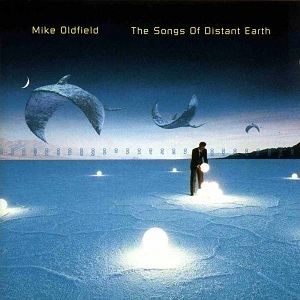Length 55:51 The Songs of Distant Earth
(1994) Voyager
(1996) Release date 14 November 1994 | Producer Mike Oldfield Artist Mike Oldfield Label Warner Music Group | |
 | ||
Released 21 November 1994 (1994-11-21) Recorded Roughwood Studio, Buckinghamshire Genres New-age music, Ambient music, Space music Similar Mike Oldfield albums, New-age music albums | ||
Mike oldfield in the beginning let there be light
The Songs of Distant Earth is the 16th album by Mike Oldfield, released in 1994 by Warner Music. It is based on Arthur C. Clarke's science fiction novel The Songs of Distant Earth.
Contents
- Mike oldfield in the beginning let there be light
- Mike oldfield the songs of distant earth medley
- Release details
- Track listing
- Inspiration
- Personnel
- Songs
- References
Mike oldfield the songs of distant earth medley
Release details
The album was released as a CD and, shortly afterwards, as an Enhanced CD of which two versions were made. Both versions' initial pressings featured an image of a manta flying in front of a planet on the front cover. The cover image was changed to one of a suited man holding a glowing orb with manta rays flying overhead. The second pressing of the enhanced CD (shown at top right) contains slightly more multimedia content, including the full version of the "Let There Be Light" video. The CD audio content is the same on all versions of the album. It was also released as a vinyl LP, which has become a rare item.
The enhanced CD content, for Apple Macintosh PowerPC computers only, was rendered on Silicon Graphics computers and used Apple's QuickTime II technology. The re-release back cover lists the "CD ROM Track" as track 000 (where all tracks have a three-digit number), and a length of 0:00. Produced in 1994 it was an early example of Enhanced CD content.
Oldfield used Emagic Logic Audio for sequencing and Pro Tools hardware for the recording of the album using a combination of tape and hard drive recording.
Track listing
- "In the Beginning" – 1:24
- "Let There Be Light" – 4:52
- "Supernova" – 3:29
- "Magellan" – 4:41
- "First Landing" – 1:16
- "Oceania" – 3:27
- "Only Time Will Tell" – 4:19
- "Prayer for the Earth" – 2:10
- "Lament for Atlantis" – 2:44
- "The Chamber" – 1:49
- "Hibernaculum" – 3:32
- "Tubular World" – 3:23
- "The Shining Ones" – 2:59
- "Crystal Clear" – 5:42
- "The Sunken Forest" – 2:39
- "Ascension" – 5:48
- "A New Beginning" – 1:33
Inspiration
The then Chairman of Warner, Rob Dickins, suggested to Oldfield that he should produce an album based on Clarke's novel, The Songs of Distant Earth.
The LP cover and CD booklet of the album contain a foreword by Arthur C. Clarke about the evolution of The Songs of Distant Earth from short story to novel. It ends with the following about the album:
"Since the finale of the novel is a musical concert, I was delighted when Mike Oldfield told me that he wished to compose a suite inspired by it. I was particularly impressed by the music he wrote for The Killing Fields and now, having played the CD-ROM of The Songs of Distant Earth, I feel he has lived up to my expectations.
Welcome back into space, Mike: there's still lots of room out here."
This was not the first time that Oldfield's music had been connected with the books of Arthur C. Clarke. Prior to The Songs of Distant Earth, Oldfield released Tubular Bells II, which contained a track called "Sentinel" — the title of a short story written by Arthur C. Clarke that later evolved into 2001: A Space Odyssey (1968). Another track from Tubular Bells II is called "Sunjammer". The Arthur C. Clarke short story, The Wind from the Sun, had the working title of "Sunjammer".
Personnel
Songs
1A New Beginning1:25
2Let There Be Light4:57
3Supernova3:24
